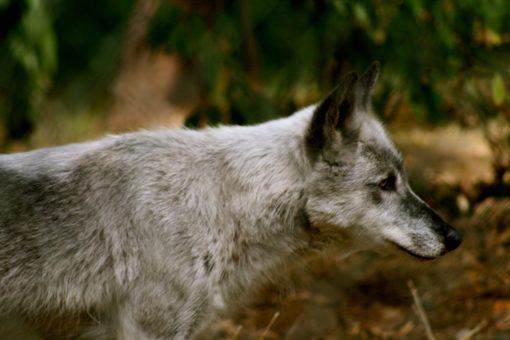
Gray wolf. Photo: Jeffrey St. Clair.
Our group Wolves of the Rockies attended a two-day Montana Environmental Quality Council (EQC) meeting recently in Helena. During that time, three or more hours were devoted to discussion of chronic wasting disease (CWD) in Montana and the Rocky Mountain states. Many experts from other states described the harsh realities and challenges posed by this disease in their respective states, and it provided us with a clear vision of what may soon unfold here in Montana.
The EQC, or perhaps more importantly, Montana Fish, Wildlife and Parks (FWP) wildlife division leadership, made no mention of the unintended positive effects of wolves and other predators and the critical role they may play in sanitizing the landscape. Why is that?
It is apparent that the state chooses to ignore the fact that its wolf population can serve a vital role in controlling the spread of CWD and other diseases. Wolves tend to kill the weaker animals in a herd, thus culling to a greater or lesser degree some of the CWD-addled animals. Conversely, the absence of predators may allow sick animals a longer period of time in which to transmit diseases like CWD, thus reducing the advantages of the “sanitation effect” wolves and other predators can have on prey species.
The rhetoric that FWP “manages our wildlife responsibly and for all” is disingenuous. It is clearly apparent that the wildlife division caters to, or worse yet, is an active advocate for, hunting organizations. The needs of so many of us who find intrinsic value in wildlife continue to be ignored. Doesn’t wildlife belong to everyone? Apparently, it is a “pay to play” system in Montana; its policies are crafted to reward hunting organizations for their contributions to the state agency regardless of the science.
Scientific scrutiny of hunting as a conservation strategy has raised many unanswered questions about carnivore hunting, specifically. The debate is riddled with disagreements over the value of an animal’s life, the human role in nature, and the effectiveness of lethal and nonlethal management of wildlife.
Hunters claim they champion carnivore conservation, provide revenue for management, control growing carnivore populations and reduce attacks on domestic animals. However, it seems most hunters are unsupportive of wolf conservation. In fact, the attitudes to hunting rules, wolf population levels and sustainability seem inconsistent with hunter stewardship.
Thus, it is apparent that hunters often hold attitudes and engage in behaviors that are not supportive of broad-based, critical ecological objectives of conservation — as in the case with addressing issues like CWD and other diseases.
We understand that attitudes take time to change. But when is it time to begin a vital conversation about the importance of carnivore conservation as it relates to the overall health of our wildlife and the landscape?
All Montanans have the right to equal representation when it comes to the decisions made about wildlife in our state — regardless of whether we are members of the consumptive community.
It’s time to examine the motivation that presently guides the leadership within the wildlife division of Montana FWP and reevaluate the ethics, policies and the goals of the agency that is charged with conservation in our state. Natural resources, specifically wildlife on public lands, must be managed to ensure that current and future generations always have wildlife and wild places to enjoy.
Marc Cooke is president of Wolves of the Rockies. He lives in Stevensville, Montana.